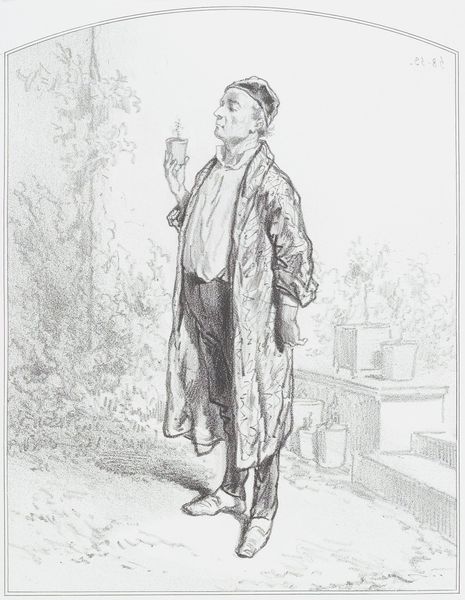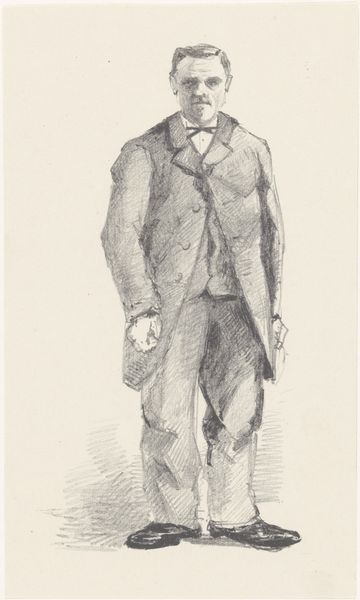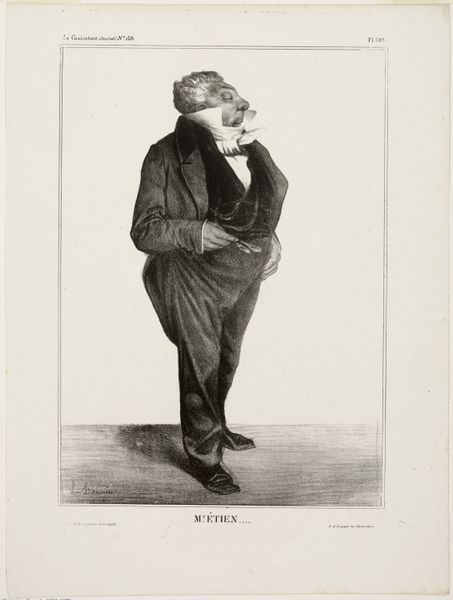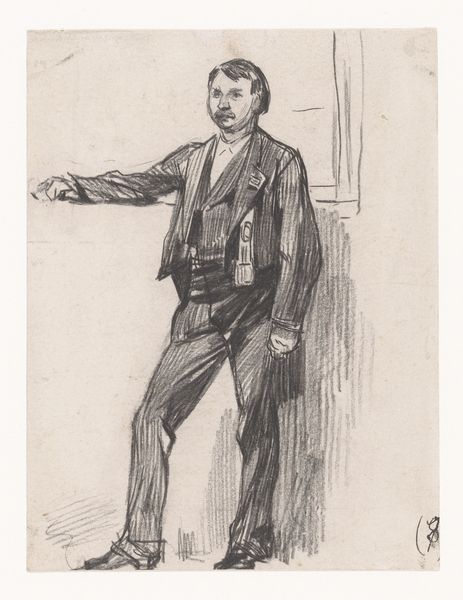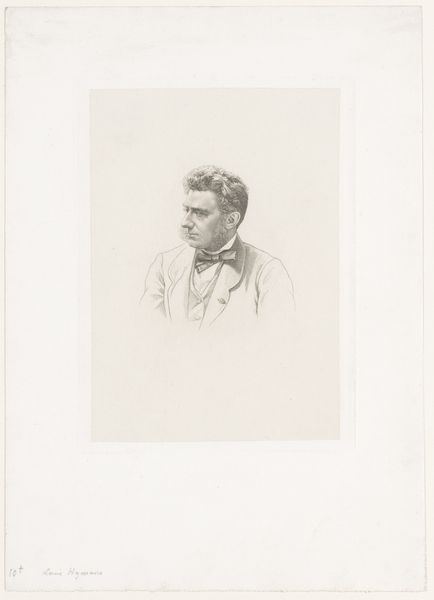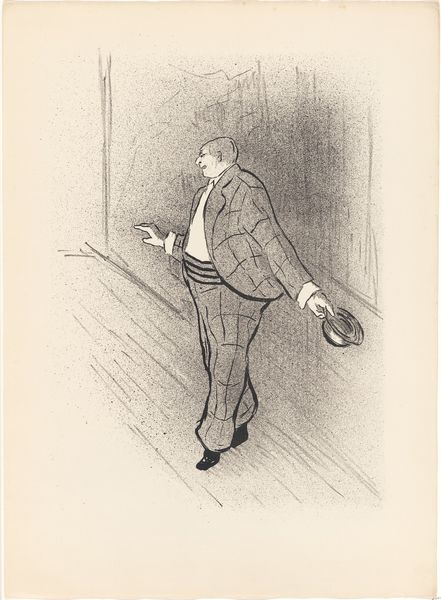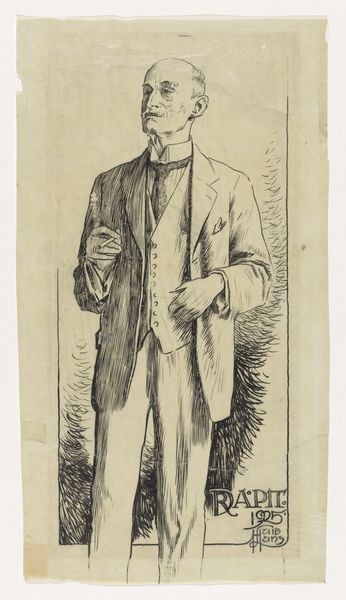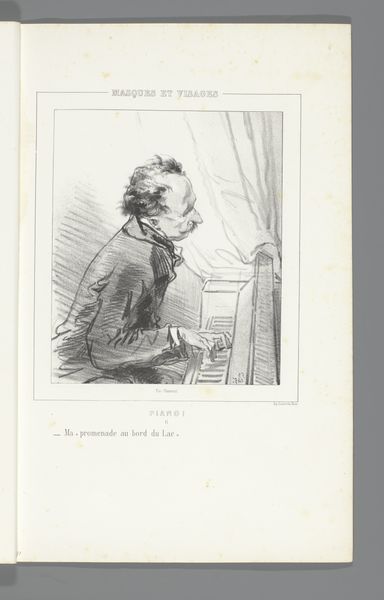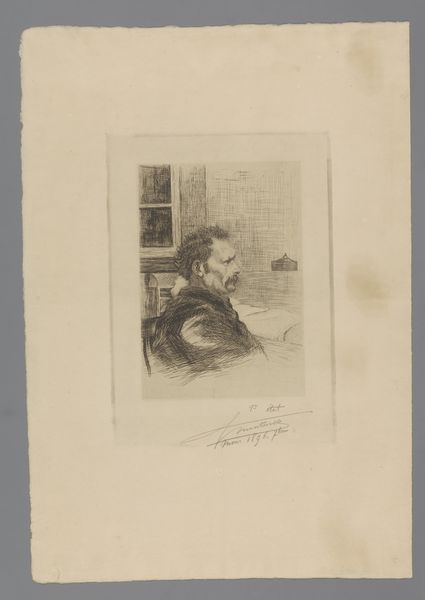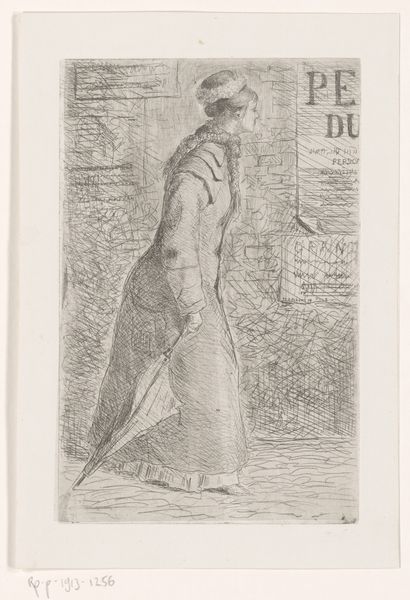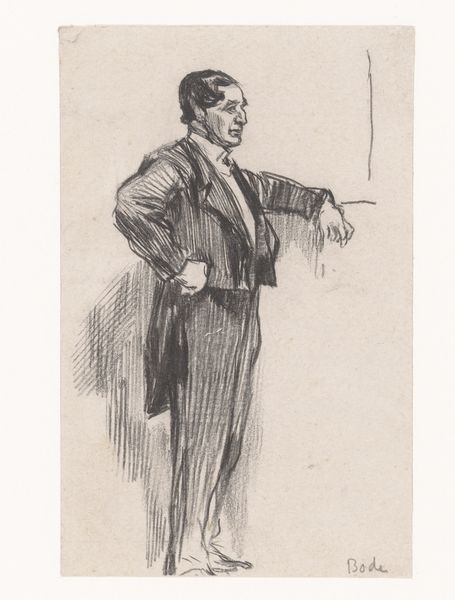
Dimensions: height 265 mm, width 202 mm
Copyright: Rijks Museum: Open Domain
Curator: Take a moment with me to observe this drawing by Paul Gavarni, "Huismeester staat man te woord", made between 1857 and 1858. It currently resides here at the Rijksmuseum. Editor: It’s surprisingly intimate for what I imagine would’ve been a public transaction. There's a weariness to the figure that is palpable. Curator: Yes, it's quite compelling, isn’t it? Gavarni, working in pen, pencil, and ink, has captured not just a scene but a moment laden with implied narrative. Look at the housemaster's simple jacket and the details of the interior furnishings—a commentary, perhaps, on labor and social class meticulously crafted through readily available materials. Editor: Absolutely. Consider where something like this drawing would have been displayed, what purpose it served. This is the era of rising social consciousness, of visual documents depicting real life to real people. Were these kinds of genre scenes aimed at reform, at fostering sympathy among different classes, or simply providing entertainment that also enforced the social hierarchy? Curator: It's fascinating to consider its reception within the shifting dynamics of 19th-century Europe. Gavarni frequently depicted working-class figures, which reflects the growing accessibility to subjects previously unrepresented in fine art. Also, this kind of detailed pencil work, meant for print reproduction, blurs the line between high art and more commercial illustration. Editor: I agree. The medium itself contributes to its historical importance. Pen, pencil, and ink – tools for mass production via printing – put artistic narratives into broader circulation. What statements are made through mass consumption of class portrayal? Curator: Exactly. And this connects with the political and economic landscape of the era, as printed imagery played a crucial role in disseminating information and shaping public opinion. Editor: One last consideration...how the museum chooses to exhibit, to contextualize Gavarni’s intent with the viewers’ perceptions today. So much shifts over time, especially in the realm of socio-political readings. Curator: True. Reflecting on Gavarni’s artistic choices through the lens of material availability and societal impact definitely enriches our appreciation of this captivating, subtle work. Editor: It makes you question the relationship of art to production and reception, in its original context, and again in ours.
Comments
No comments
Be the first to comment and join the conversation on the ultimate creative platform.
